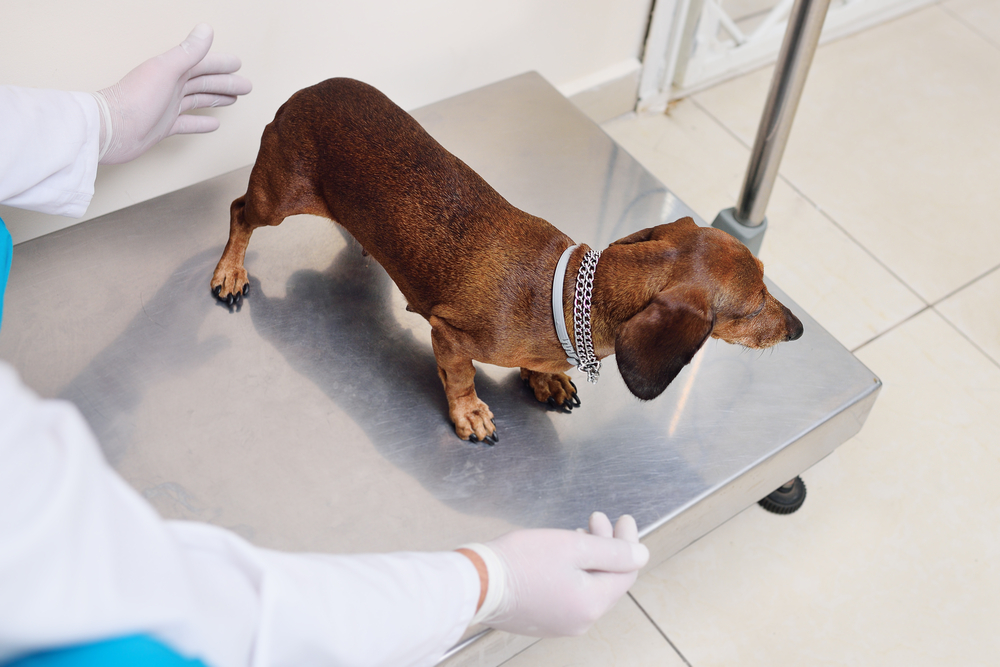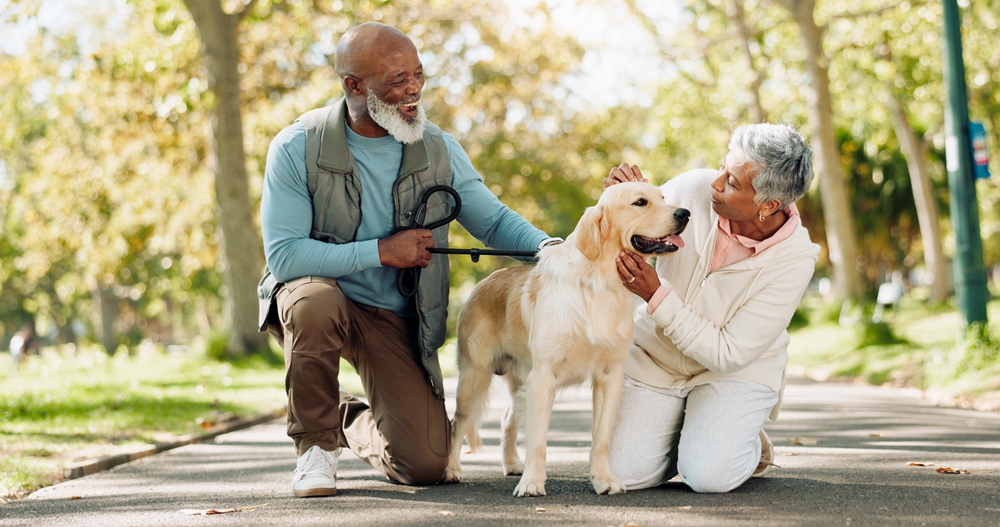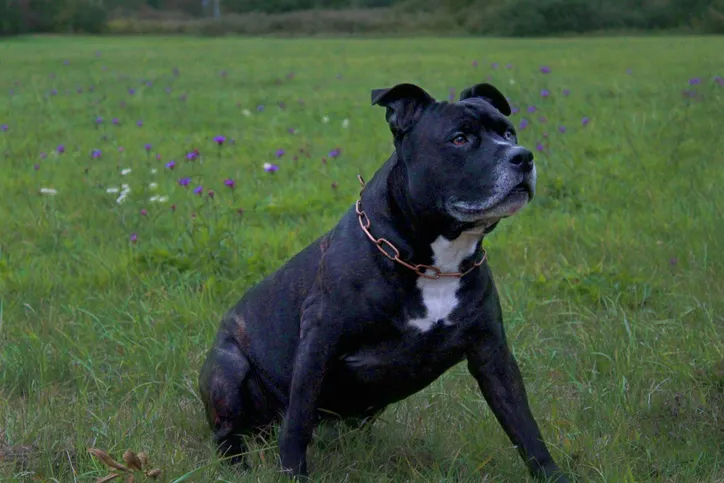Dogs are often masters at hiding discomfort, so it’s crucial to recognize the subtle (and sometimes not-so-subtle) signals that something may be wrong. From behavioral changes to physical symptoms, certain signs require prompt attention. Here’s a guide to spotting the warning signs that your dog’s health may need immediate care—because catching these issues early can make all the difference.
1. They’re Super Thirsty and Pee More

Increased water intake, accompanied by more frequent bathroom breaks, could be a sign of diabetes, kidney disease, or even Cushing’s disease. While it’s normal for dogs to drink more after exercise or on a hot day, excessive thirst that persists isn’t something to ignore. Monitoring their water intake and bathroom habits can offer valuable clues, and a vet visit can help determine any underlying issues before they escalate into something more serious.
2. They Start Vomiting or Have Diarrhea

An occasional upset stomach may not be alarming, but persistent vomiting or diarrhea is often a red flag. Frequent vomiting or prolonged diarrhea can lead to dehydration and signal serious issues like pancreatitis, infections, or toxic ingestion. If these symptoms last more than 24 hours or are accompanied by lethargy, discomfort, or changes in appetite, it’s time to seek immediate veterinary care. Prompt treatment can prevent complications and ensure your pup’s health gets back on track.
3. They’re Tired and Lethargic

Dogs might slow down after a busy day, but persistent lethargy that lasts beyond a typical rest period is concerning. If your ordinarily energetic dog seems uninterested in walks, playtime, or their favorite treats, it could indicate underlying health problems like anemia, infection, or heart disease. Sudden or prolonged tiredness shouldn’t be brushed off, as it may be the first sign of a more severe issue. A trip to the vet can uncover potential problems and help your dog regain their energy.
4. Their Breathing Is Labored, and They Cough More

Healthy dogs breathe easily, so labored breathing or persistent coughing should raise red flags. Shortness of breath, wheezing, or rapid breathing can indicate respiratory issues, heart problems, or allergic reactions. Coughing that doesn’t subside might sometimes signal kennel cough or even heart disease. Because breathing difficulties can escalate quickly, contacting your vet immediately if you observe these symptoms is crucial to safeguarding your dog’s well-being.
5. They Lose or Gain Weight Suddenly

Unexplained weight changes are often tied to health conditions, whether it’s rapid loss or gain. Weight loss might point to digestive issues, cancer, or metabolic disorders, while sudden weight gain could signal hormonal imbalances or fluid retention related to heart disease. If your dog’s weight shifts noticeably without a change in diet or exercise, it’s a sign that a veterinary checkup is needed to uncover the underlying cause.
6. They Start Frantically Scratching, Licking, or Shedding

If your dog is scratching, licking, or shedding excessively, it could indicate more than just a minor itch. Skin issues often stem from allergies, infections, parasites, or autoimmune conditions. Constant scratching or licking can worsen the problem, leading to painful hotspots or even infections. Addressing these symptoms promptly with a vet can help identify the root cause and relieve your dog, preventing further discomfort.
7. They Shake Uncontrollably or Have Seizures

Seizures or sudden, uncontrolled shaking episodes are alarming and always warrant immediate veterinary attention. Seizures can result from epilepsy, toxic ingestion, metabolic disorders, or brain injuries, while shaking might indicate pain, stress, or fever. If your dog experiences a seizure, calmly clear the area of obstacles and contact your vet. Documenting the episode’s details, including timing and symptoms, can provide valuable information for diagnosis and treatment.
8. They Stop Eating or Drinking

A sudden loss of appetite or refusal to drink water can signal various health issues, from dental pain and gastrointestinal problems to more severe conditions like kidney failure or infections. If your dog skips meals for more than a day or seems disinterested in water, it’s essential to consult a vet immediately. Hydration and nutrition are critical for your dog’s health, and ignoring these signs could lead to rapid deterioration.
9. Their Gums Look Pale or Discolored

Checking your dog’s gums can offer a quick glimpse into their health. Healthy gums are typically pink and moist, while pale, white, or bluish gums can indicate anemia, poor circulation, or respiratory distress. Gums that appear bright red might suggest heatstroke or inflammation. Changes in gum color or texture require immediate veterinary attention, as they often signal underlying issues that can become life-threatening if untreated.
10. They Develop Sudden Lumps or Bumps

Discovering a lump or bump on your dog can be unsettling. While not all lumps are dangerous, any sudden or rapidly growing mass warrants a vet visit. Lumps can range from harmless cysts to serious conditions like tumors or infections. A professional evaluation ensures accurate diagnosis and treatment, giving you peace of mind and your dog the care they need.
11. They Limp or Avoid Using a Limb

Limping or favoring a limb can indicate injury, arthritis, or joint issues. Dogs might try to hide pain, so even subtle signs like hesitation to jump or climb stairs could point to discomfort. If limping persists for more than a day or seems severe, consult your vet. Early intervention can prevent further injury and ensure your dog stays active and pain-free.
12. Their Eyes Appear Cloudy or Red

Changes in your dog’s eyes, such as cloudiness, redness, or excessive tearing, could indicate underlying problems. Eye issues might stem from infections, injuries, or conditions like glaucoma. Left untreated, these problems can lead to vision loss or chronic pain. Regularly checking your dog’s eyes and seeking prompt veterinary care for any abnormalities helps protect their sight and overall health.
13. They Struggle to Stand or Walk

Difficulty standing, walking, or maintaining balance can signal neurological issues, arthritis, or even inner ear infections. These symptoms may appear suddenly or develop gradually, but they always require attention. If your dog seems disoriented, struggles to move, or has trouble staying upright, a vet visit is critical. Identifying the cause early ensures appropriate treatment and improves your dog’s quality of life.
14. They Display Unusual Aggression or Fear

Behavioral changes, such as sudden aggression or heightened fearfulness, can signal pain, illness, or stress. Dogs often act out when they feel unwell or uncomfortable, using behavior to communicate what they can’t express in words. If your dog’s temperament shifts drastically, it’s essential to rule out medical issues first. A vet can help determine whether the behavior stems from physical discomfort or requires further intervention, ensuring your dog’s well-being.

